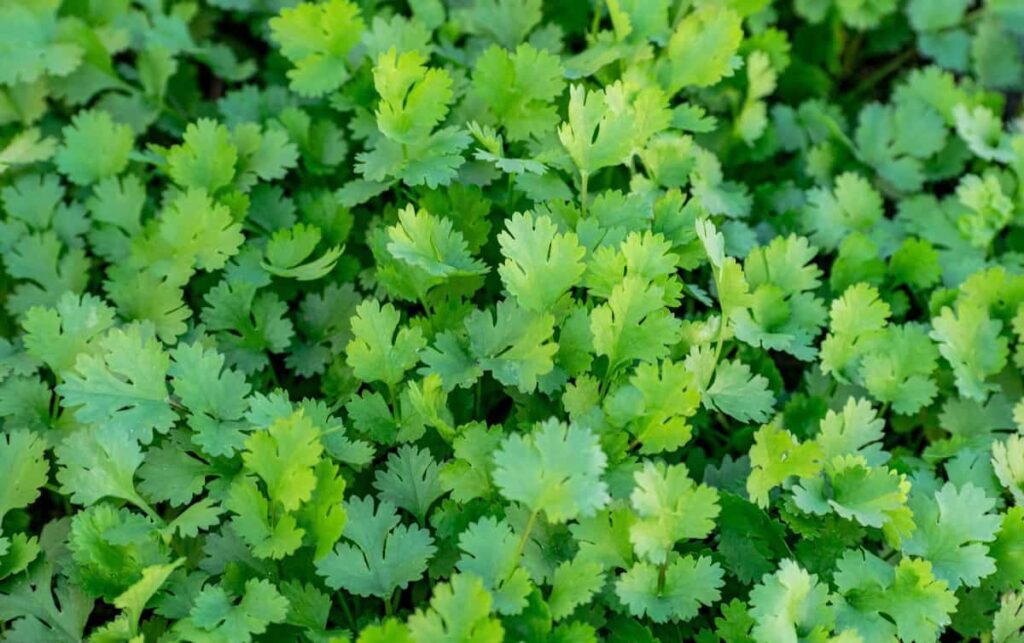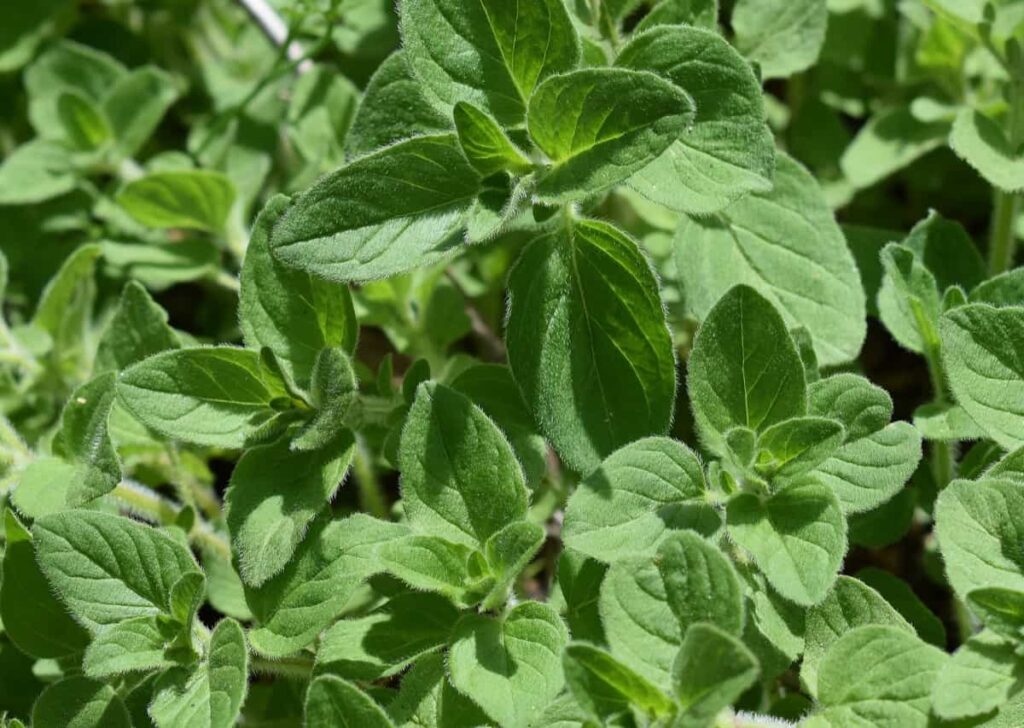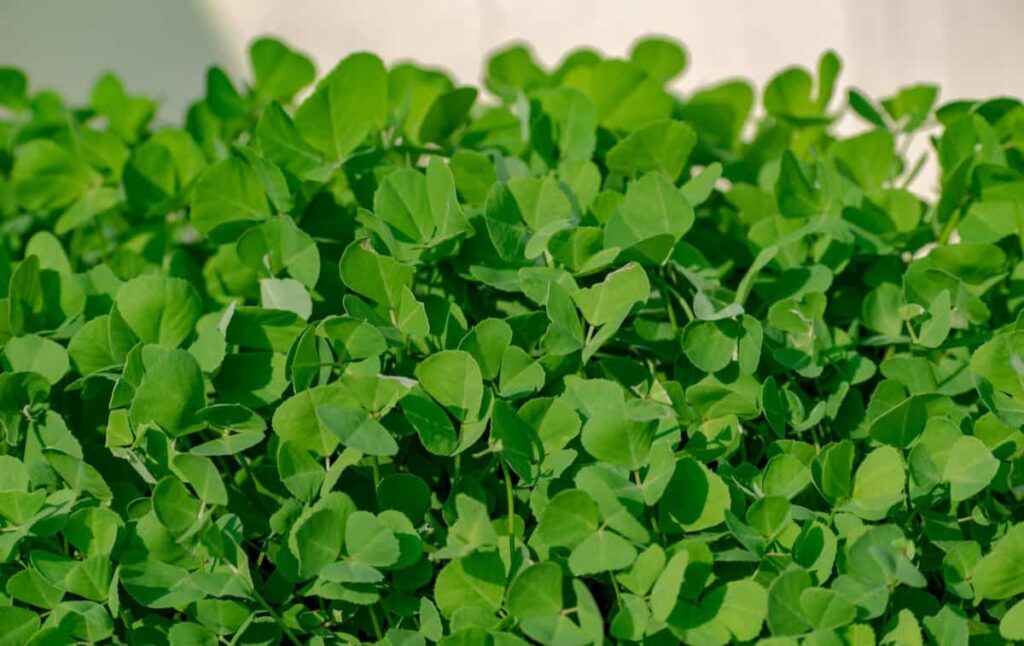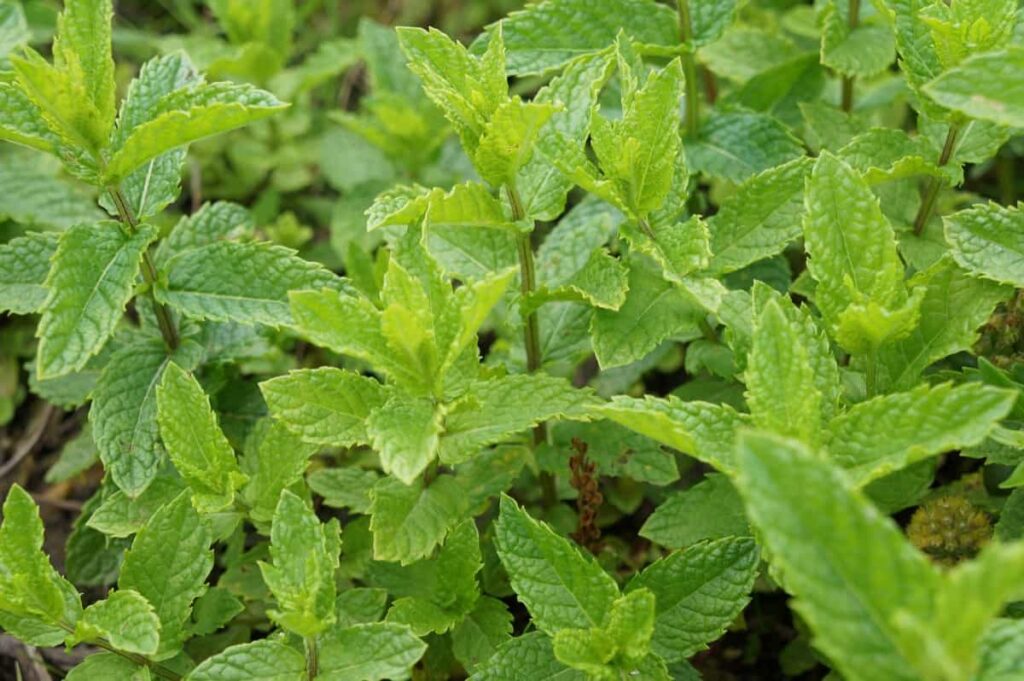Instead of spending a little money every time you need some Indian herbs for cooking, you can grow your own in your kitchen garden and always have a fresh supply on hand. Not only are they eco-friendly and good for your health, but they can also give your kitchen a splash of color.
For these reasons, it’s becoming more common for Indian households to maintain their own little Indian herb gardens. For planting a herb garden, a herb planting calendar is a must. Below we learn the Indian herb planting calendar, the Indian medicinal herbs planting calendar, the month-wise gardening chart for growing herbs in India, planting schedules, and the growing guide.
India herb planting calendar
Herbs that are grown in India
Planting entire coriander seeds is as easy as placing a container with the seeds on a sunny window sill in early spring. At no stage should you allow the plant to get over-watered. There will soon be tender small coriander branches ready to be picked and used as a garnish. Coriander, also known as dhania or cilantro, is a bright and refreshing herb that pairs well with any dish from India.
In case you missed it: How to Start a Terrace Garden From Scratch in Delhi: For Vegetables, Flowers, Herbs, and Fruits

After using the leaves, you can replant the mint stalks (which came with roots) in a container. Easy to grow and abundant once established, mint is a useful and popular plant. If you don’t want this invasive plant taking over your garden, it’s best to grow it in a container. Tulsi, a holy plant grown in many Indian households, needs a lot of water and sunshine.
It’s best to plant it just before the monsoon when temperatures are high and let it grow in colder weather and rain. There is a warm, spicy taste to the leaves. A market-bought lemongrass stem can be rooted and grown into a full plant. The first step is to place it in a jar full of water. Once the lemongrass has reached a height of approximately 2 inches, move it to a sunny location and change its water daily.
Full sun is essential for the growth of aromatic curry leaves. Except for the hottest parts of the year, it should be placed where it will get direct sunlight. Even though they can be grown from seeds, stem cuttings (about 3 inches long) are the most convenient method to start a new plant. Curd or buttermilk that has gone bad makes for great homemade fertilizer for this plant, which is grown for its distinctive taste. The ajwain plant is another kind of herb that can be found in India.
The ajwain plant is simple to grow. It can survive without a lot of water or exposure to the sun. The dill plant thrives in sunny locations with good drainage and protection from the wind. The plant-like is to be seeded immediately in the spring and does not like to be transferred. Therefore, you should use stalks to support it. Plant the Thyme seeds at a distance of six inches in early March.
In case you missed it: Growing Organic Thyme From Seeds, Cuttings In Pots

Thyme thrives in moderate sunlight, but it takes many months to mature from a seedling and be ready for harvest. In mid-spring, plant parsley seeds for a summer crop, and in mid-summer for a yield in winter. The germination rate can be increased by soaking the seeds in water for 24 hours before planting them. Because of the lengthy time required for germination (often three to four weeks), patience is required.
Harvesting parsley is a common practice that promotes its continued growth. Due to the plant’s germination issues, rosemary is often spread by cuttings rather than seeds. Having established itself, this woody shrub will flourish for many years. It thrives in hot, sunny environments with alkaline soil that drains well. Keep the plant pruned regularly to prevent it from becoming leggy.
Indian herbs that grow best in shade
Thyme comes in a wide variety, most of which can grow in partial shade. Avoid over-watering by letting the soil dry out a little between soakings. For a fragrant pot, plant it alongside other flowers and herbs. Parsley thrives in full sun to partial shade and well-drained soil. Every 8 to 10 inches, remove a few of the weakest seedlings. Give the plants plenty of room to spread their lengthy taproots if you decide to grow them in pots.
Even though it’s usually grown annually, parsley is a biennial that can survive the winter. One of the greatest plants for partial shade is mint. This culinary staple’s rapid and simple growth means it can quickly take over a garden if proper care is not taken. If you want your mint to thrive, you should grow it in a pot or container instead of just throwing it into the ground. Trim mint regularly to prevent it from becoming lanky and sprawling if grown in the shade and exposed to sunshine.
Chives grow in clusters that are anywhere from 6 inches to 12 inches tall, and their grass-like leaves can be used in place of parsley in salads, soups, and other foods. Chives are sun-loving plants but can survive in somewhat shaded areas. The leaves of the perennial plant tarragon, which are known for their distinctive licorice taste, are often used in salads, spice blends, and vinegar. Tarragon thrives in morning light and afternoon shade and is best propagated by cuttings or seedlings.
In case you missed it: Custard Apple Diseases and Pests (Sugar Apple): Anthracnose, Black Canker, Diplodia Rot, Leaf Spot, Symptoms, Causes, and Preventio

Does Tulsi need sunlight?
To thrive, Tulsi must be exposed to sunshine. Holy Basil needs at least 4 hours of sunshine daily to live, but it will flourish within 6-8 hours. However, Tulsi can be damaged by prolonged exposure to the hot afternoon sun. Therefore, it is preferable to provide some shade when it is in bloom. As long as it receives at least 4 hours of sunshine every day, Tulsi can be grown inside all year round. To maximize growth, plant in a south-facing window.
When to plant ginger in India?
The first two weeks of May are ideal for growing ginger in India since this is when the pre-monsoon rains tend to occur. If you have access to water, you can start planting it in the middle of February or at the beginning of March. This gives you a significant head start. Planting crops earlier in the season and the arrival of summer rains leads to a greater yield and lowers the risk of diseases.
When to plant turmeric in India?
As turmeric is a plant that grows seasonally, it is recommended that you get a fresh harvest during the late months of December and January. It is recommended that the months of March or April be used for planting turmeric so that the resulting crop has the highest possible quality. Simply insert the roots into the soil, and then be sure to hydrate the plant every two to three days. After a few weeks, you will see that the plant begins to put forth new shoots.
However, one should be cautious while watering the plant since doing so too often can cause the roots to get harmed, which will compromise the plant’s health. When the shoots develop, cover them with dead leaves to protect them from the elements. The dead leaves will eventually break down and lower the amount of organic matter in the soil.
Can aloe grow in India?
For many years, aloe vera has gained popularity among gardeners in India as a potential aesthetic plant. The species is well-liked among contemporary gardeners since it is said to have therapeutic properties and also because of its unique blooms, shape, and succulence. Because of its succulence, the plant can live in regions with minimal natural rainfall, making it an excellent choice for rockeries and other types of gardens that need little to no watering.
The species can withstand harsh weather conditions, including severe cold. Even though this species is reasonably resistant to most insect pests, there is still a chance that spider mites, scale insects, mealy bugs, and aphid species can cause the plant’s health. When grown in containers, the plan calls for potting soil that is well-drained and sandy, as well as bright, sunny circumstances.
Aloe plants can wilt and die if exposed to too much light or if their container does not allow excess water to escape. It is advised that you use a propagation mix that is of high quality and allows for adequate drainage. Because of their open porosity, terra cotta pots are the best choice. Before rewatering, containerized plants should be allowed to become dry first.
When kept in containers, aloes are prone to developing several “pups” that emerge from the edges of the “mother plant.” To provide space for further plant development and aid in preventing pest infestations, plants that have gotten overcrowded should be separated and reported. There is a possibility that aloe vera can become dormant throughout the winter, which means that it will need much less water at this time.
In case you missed it: Growing Organic Oregano In Containers, Pots

When to grow ashwagandha in India?
This germinator requires much light; therefore, the ideal time to plant it is in the early spring, indoors, or in a greenhouse. Ashwagandha cultivation occurs in places with poor fertility and marginal wastelands. The plant thrives in red, sandy, black, or loamy soil with a pH between 6.5 and 8.0 and adequate water drainage. It can be grown successfully even at the height of one thousand meters.
The ideal environment for growing ashwagandha is subtropical. This crop can be successfully cultivated in semitropical regions that get between 500 and 750 millimeters annually. The crop can only be grown successfully during dry periods of the growing season. It can be grown successfully at temperatures ranging from 20 to 35 degrees Celsius. Rainfall that occurs later in the winter is beneficial to the healthy growth of the plant’s roots.
What month should I plant lavender in India?
Growing lavender is best done in the summer or early spring. The crop can be grown in various soils, although the optimal growing conditions are sandy loam soil with adequate drainage and a pH ranging from 5.50 to 7.50. It requires a climate that ranges from subtropical to tropical, with a minimum temperature of 15 degrees Celsius in the winter and a maximum temperature of 38 degrees Celsius in the summer. The crop can grow in various climates, from wet and humid coastal climates to dry and arid inland climates. Because of this, many say that the crop is acclimatizing and adaptable.
Does sage regrow after cutting?
Pruning sage is an early spring chore. If you trim it now, the plant won’t have leaves to protect it over the winter, and it may not survive. Reduce the height of the shoots to around 5 cm in February. When the circumstances are right, sage will put forth new shoots after a good pruning. However, you should hold off if your sage has sprouted new branches since you last intended to cut it.
Following the plant’s renewal of leaves and stems, sage can be harvested for its leaves. Cuttings are your best bet for increasing your stock when propagating fragrant sage in the garden. Simple to carry out. Sages tend to have the most successful offspring during July and late August. The plant mustn’t produce any blossoms. Then take away some of the buds and reduce the number of flowers.
To begin, use a sharp knife and cut off a new sprout approximately 6 centimeters from the top of the leaf. Finally, take off the bottom set of leaves until there are just three sets left on the cutting. Place the slice of the compost soil cautiously, then water it after it has been placed. Water the soil regularly to ensure its health. A plastic bottle can be used as a greenhouse if cut in half and put gently over the pot holding the cutting because the cutting will thrive in a humid atmosphere.
It’s time to remove the lid if the bottle has begun to steam. The cutting should be allowed to root in its container for a few weeks before being moved to the garden. If you take a cutting of sage from your plant and put it in a glass of water, it will take about two weeks to develop enough roots to plant it in the ground.
When should I harvest Ashwagandha?
Ashwagandha takes six months to mature because of its slow growth. This plant is so simple to cultivate that you can harvest it by hand. After giving the soil a good soaking, grab the plant by its roots and carefully remove it from the soil. Care must use a trowel to loosen the soil and not damage the plant’s roots.
You should wash your Ashwagandha well once you’ve dug it out and then split it in half lengthwise with a sharp knife. Take off the root ball and cut each root into 2- to 3-inch-long segments. To dry, the roots should be laid out flat on a rack. The rack must be kept in a dry, shaded, well-ventilated place so the roots can dry out completely.
In case you missed it: How to Grow Fenugreek/Methi from Seed to Harvest: Check How this Guide Helps Beginners

Herbs planting calendar/chart/schedule/guide for India
| Herbs | Sowing time | Germination time |
| Cumin | Oct to Nov | 7 to 14 days |
| Coriander | Mid-Oct to Mid-Nov | 2 to 3 weeks |
| Fenugreek | June to July October | 3 to 5 days |
| Mustard | Sep to Oct | 7 to 10 days |
| Holy basil | Oct to Jan | 7 to 12 days |
| Ginger | Mar to April | 6 to 8 weeks |
| Turmeric | Mar to Apr | 6 to 10 months |
| Lemon grass | Mar to Apr | Two weeks |
| Parsley | Nov to Jan | 7 to 10 days |
| Sage | Feb to Mar | 10 to 21 days |
| Curry leaves | July to Aug | 10 to 15 days |
| Dill | Oct | 10 to 14 days |
| Mint | Feb to Mar May | 7 to 15 days |
| Oregano | Feb to Mar | 1 week |
| Rosemary | Sep to Oct | 15 to 25 days |
| Thyme | April | Up to 4 weeks |
| Tarragon | July to Aug | 10 to 14 days |
| Chives | Mar to July | 7 to 10 days |
In case you missed it: 18 Common Mint Plant Problems: How to Fix Them, Solutions, and Treatment

Medicinal herbs planting calendar/chart/schedule/guide for India
| Medicinal herbs | Sowing time | Germination time |
| Aloe vera | June to July Sep to Oct | 2 to 4 weeks |
| Basil/ Tulsi | Oct to Jan | 8 to 12 days |
| Coriander | Mid-Oct to Mid-Nov | 2 to 3 weeks |
| Spearmint | March to May | 7 to 15 days |
| Lemongrass | March to April | Around two to three weeks |
| Cardamom | June | 20 to 40 days |
| Giloy | June to July | 7 to 10 days |
| Curry leaves | July to Aug | 10 to 15 days |
| Ashwagandha | June to July | 6 to 7 days |
| Sage | Feb to Mar | 10 to 21 days |
| Fenugreek | Oct to Nov June to July | 3 to 5 days |
| Khus | June to July | 3 to 5 days |
| Lavender | Aug to Sep | 15 to 30 days |
| Peppermint | Mid-Feb to Late-Mar | 7 to 15 days |
| Henna | Mar to April | Around 12 days |
Conclusion
Be sure the containers you use drain well or use self-draining containers. Indoor plants need special soil; therefore, don’t use regular soil. Most plants need direct sunlight for proper growth. Be sure to keep them moist, but don’t overdo it. Each herb should be grown in its container. Your herbs won’t thrive without enough ventilation.
- How to Grow Hibiscus from Flower
- Plantation Ideas for Home Decoration: A Beginners Guide
- Flower Garden Designs and Layouts for Beginners
- Planting and Spacing Techniques in Papaya: A Beginner’s Guide
- Growing Gold: Essential Techniques for Planting Pineapples
- How to Make Kalanchoe Plant Bushy: Home Remedies and Solutions
- 11 Reasons Why Your Gardenia is Not Blooming: Home Remedies and Solutions
- Eco Elegance: The Guide to Designing a Drought-Tolerant Landscape
- Gardening on a Slope: Strategies for Hillside Landscaping
- Nourish and Flourish: Top Organic Mulches for Thriving House Plants
- Everything You Want to Know about Indian Mogra Flower: Discover Uses and Growing
- Green Thumb Success: Expert Tips for Cultivating Greenhouse Pumpkins All Year Round
- Maximize Growth & Flavor: The Ultimate Guide to Companion Planting in Herb Gardens
- How to Control Rhododendron Problems Naturally: Home Remedies and Organic Ways to Fix Them
- Natural Magic: The Remarkable Benefits of Cinnamon for Plants
- Best Steps to Revive Dying Tulip with Natural and Organic Treatment
- 10 Reasons Why Your Angel Trumpet is Not Blooming: Remedies and Treatment
- How to Fix Periwinkle Leaf and Flower-Related Problems: Natural Remedies and Solutions
- How to Fix Zinnias Leaf and Flower Problems: Discover Natural and Home Remedies
- Organic Steps to Induce Lemon Tree Flowers: A Comprehensive Guide
- Bloom Booster: Crafting the Perfect Homemade Bougainvillea Fertilizer
- Optimizing Growth: A Guide to Applying NPK Fertilizer for Potted Plants
- 10 Best Homemade Fertilizers for Rubber Plant: DIY Recipes and Application Method
- How to Boost Female Pumpkin Flowers: Effective Steps for More Flowers and High Yields
- Transform Your Indoor Garden: Top Benefits of Pink Salt for Houseplants
- 10 Best Homemade Fertilizers for Peacock Plants (Calathea): Easy DIY Guide
- Unlock Blooms: 9 Reasons Why Your Potted Chrysanthemum is Not Blooming
- 8 Reasons Why Your Potted Hibiscus is Not Blooming: Fix it with Simple Solutions
- Unlock Blooms: 9 Key Reasons Your Potted Frangipani Won’t Flower
- 10 Reasons Why Is My Ice Plant Not Blooming: Remedies and Treatment
- 10 Reasons Why My Potted Hydrangea Not Blooming: Treatment and Remedies
- 10 Reasons Why is My Wisteria Not Blooming: Remedies and Treatment
- 10 Reasons Why is My Goldfish Plant Not Blooming: Remedies and Treatment
- Maximize Your Space: Ultimate Guide to Balcony Gardening with Grow Bags
- 10 Reasons Why Your Iris is Not Blooming: Remedies and Treatment
- 10 Reasons Why Your Anthurium Plant is Not Blooming: Treatment and Remedies